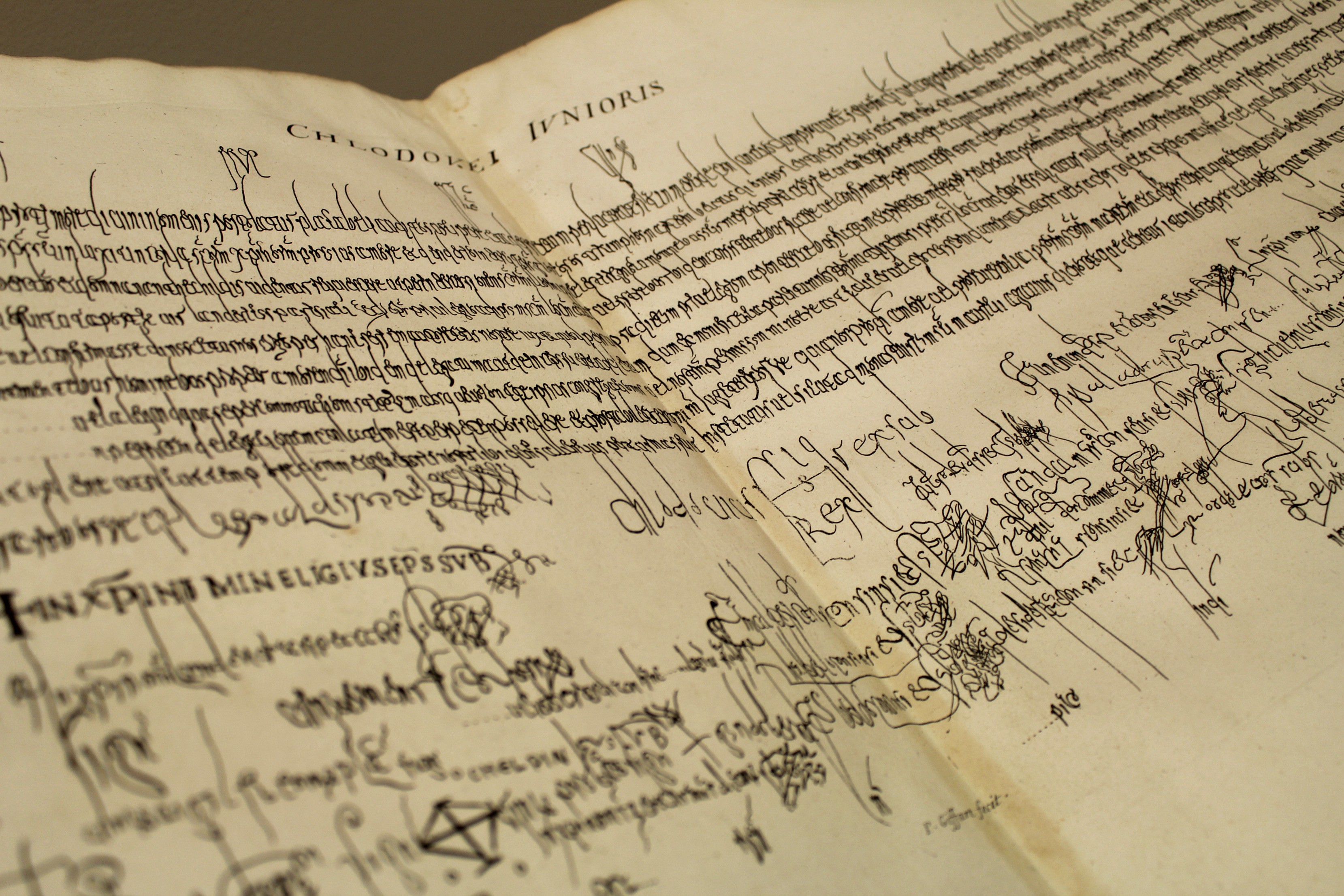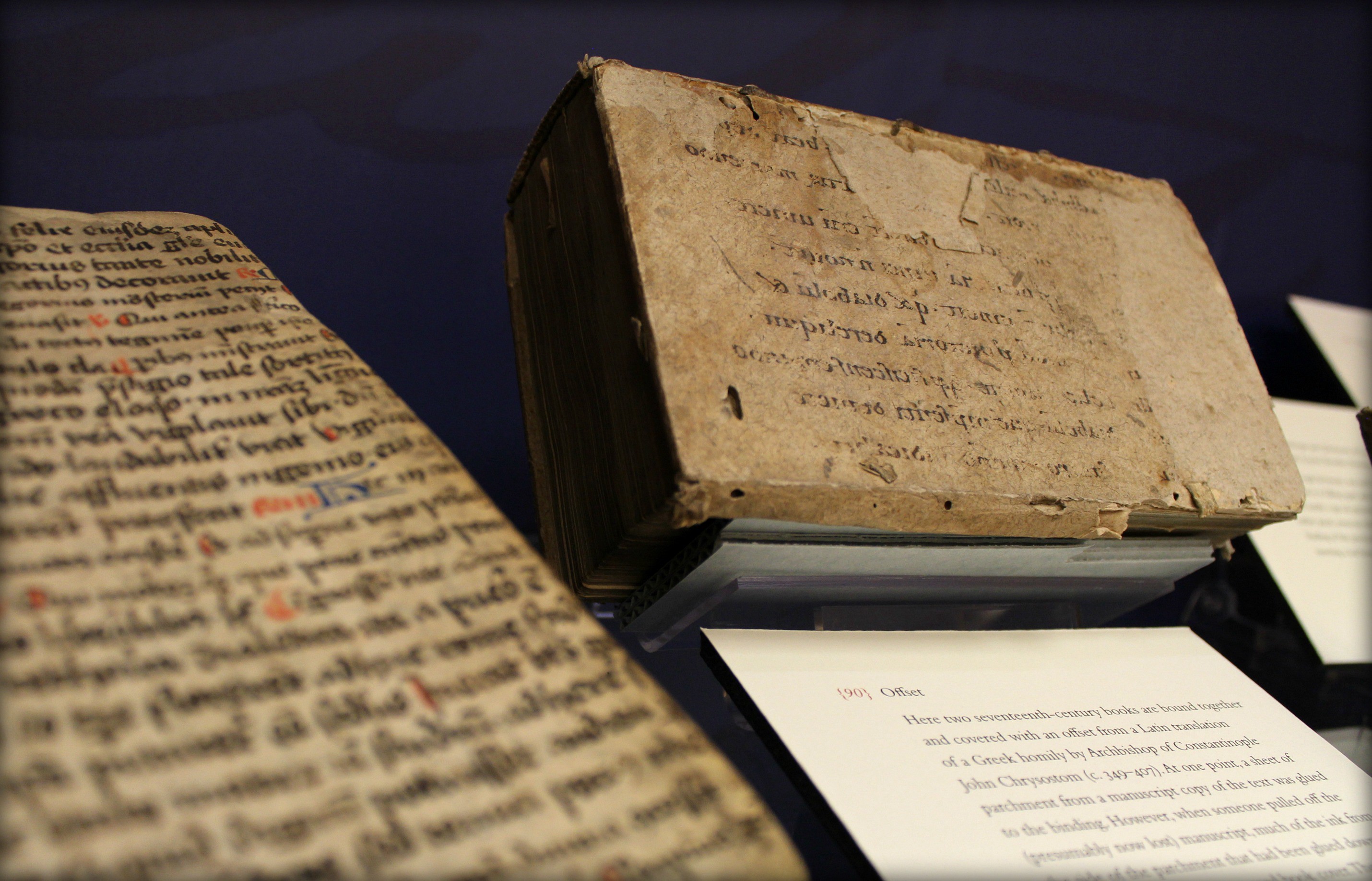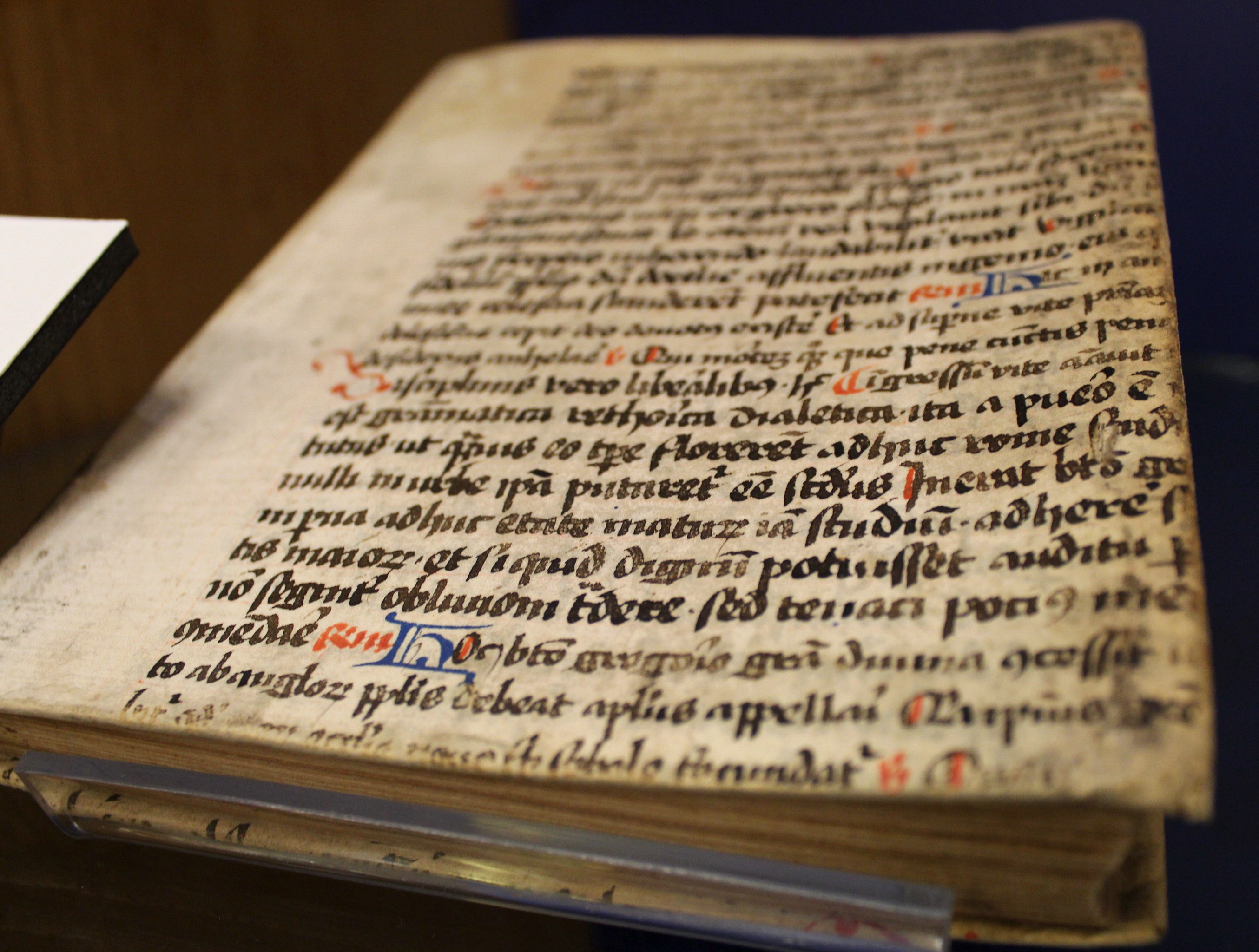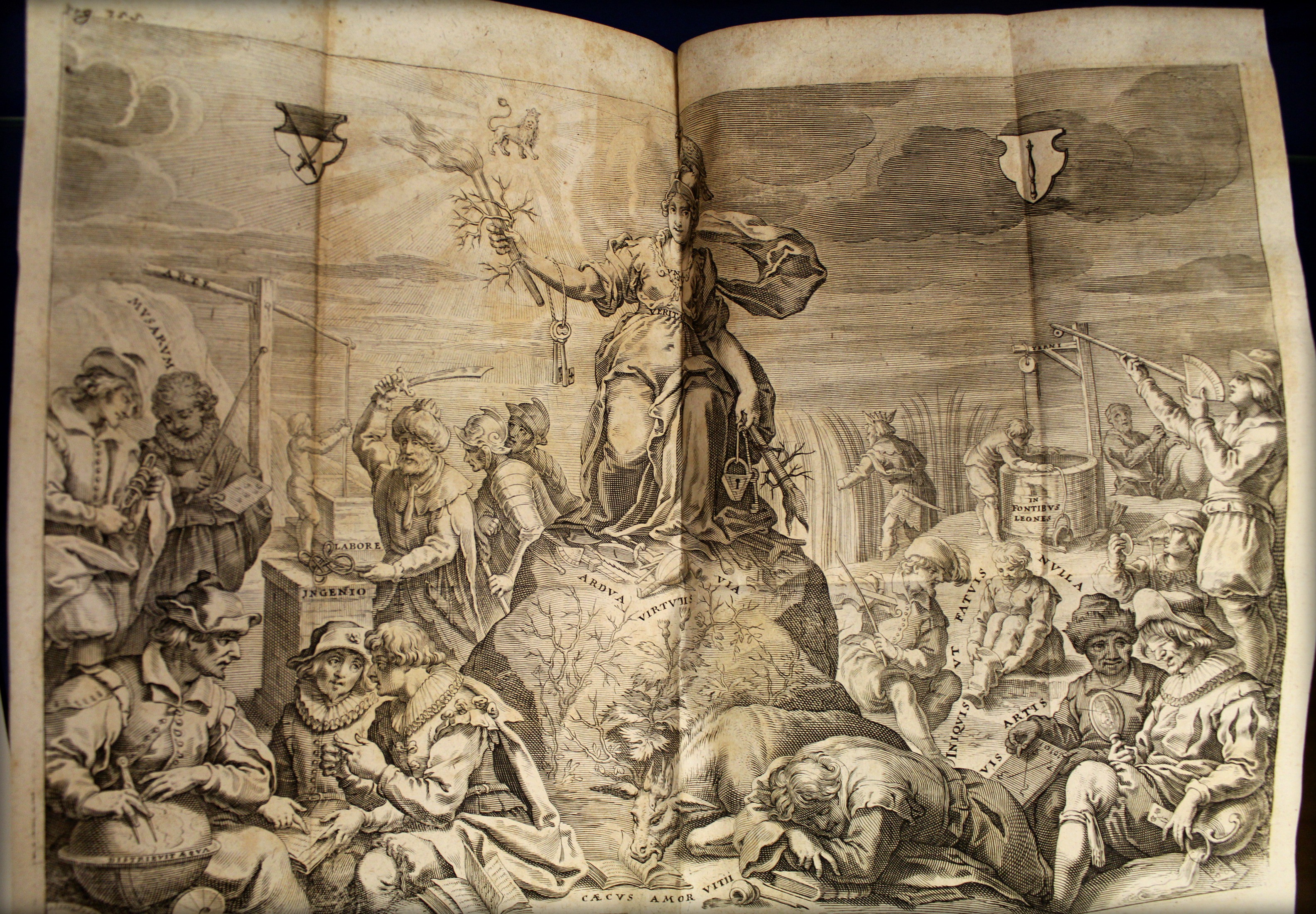10 Tips to Curate a Great Exhibit

When Joe Patrouch and Felice Lifshitz first heard about the Bruce Peel's Salzburg seminary library collection, they saw immediate potential. The two professors - one a specialist in the Holy Roman Empire, the other a religious and cultural historian - predicted a likely goldmine of research material. Their prediction proved true - though not quite in the way they had expected.
Joe and Felice co-curated the Bruce Peel Library's current exhibition, Salt, Sword, and CrozierSalt, Sword, and Crozier, based on the Salzburg seminary library's 3,500-title collection. While they had both curated minor exhibitions in the past, Salt, Sword, and Crozier surpassed any of those experiences. And as with any major project, it was the unexpected twists, turns, and challenges that shaped the final product.
Here are a few of the things they learned through the process:
1. Know what you're getting into
When they wrote their original proposal, Felice and Joe had not actually seen the collection. "We had this vision a priori of what the exhibit was going to be," Felice says, "but it wasn't based on any actual evidence of what was in the collection." At the time, they were working from a limited e-catalog which provided only the titles, authors, and occasional dates and places of publication for the collection.
2. Be flexible
"Seminary library, Archbishop of Salzburg… My assumption was there would be something about religion," Joe says. Felice held similar expectations. They quickly discovered that the collection - purchased in the '60s - didn't contain the entire seminary library, however.
"It's only the law collection," Joe explains. "That required us to re-organize, and re-think what we were going to work on."
3. A little perseverance is required
Early in the process, Felice recalls a lot of frustration. "I wasn't finding anything that matched my interests closely," she remembers. "I had this whole idea about nuns that was completely worthless - there wasn't a single thing in 3,500 titles that had anything to do with nuns."
She pushed forward with the project regardless, and called up a first batch of books from the collection. Feeling them in her hands changed everything. "As soon as they appeared in my hands, and I started to look through them, I could see something in every single one of them."



4. You're in for a commitment
Salt, Sword and Crozier may have opened in September of 2017, but Joe and Felice first wrote their proposal in 2012. In addition to curating and creating the exhibits, the project required publishing a 120-page free-standing catalog, and collaborating with the Bruce Peel and the University Press, as well as a numismatist, historical cartographer, and art historian.
5. It's not about adding - it's about cutting
"It's mostly about getting rid of stuff," Joe says, "not putting stuff in." The U of A's Salzburg seminary library collection contains around 3,500 titles; Salt, Sword and Crozier displays about 70.
6. Learn to work together
While both historians, Joe and Felice specialize in separate areas - they scoured the collection with entirely different research interests. "We basically divided up, and said: we're each going to do half of the books," Joe explains.
Eventually, their themes and selections had to be reconciled into a cohesive exhibition. "The greatest effort was when we went from having our two separate trucks of books, laid them all out on the tables, and started moving them around into thematic cases," Felice says.
7. Tell a story
"The exhibition designer told us again and again: you have to tell the story," Felice says. An exhibit moves beyond research interests: each display case - as well as the collective exhibition - has to build a narrative.
Salt, Sword, and Crozier tells the intertwined economic, political, and religious story of the prince-bishops of Salzburg.
8. Think visuals
"It's not just the content of a book, but the visual aspect," Joe says. The exhibition needs to be visually interesting: elaborate frontispieces and images, revealing marginalia, or unique book covers (many were bound in medieval manuscripts) make for sharper displays.



9. Get comfortable with challenges
Aside from discovering that the collection is actually the law subset of the seminary library, Joe and Felice met several nuanced challenges working with the 3,500 titles. Among them: names.
"There would be somebody born in Germany, who worked at the papal court in Rome," Felice explains. "Someone like that would have a Latin name, an Italian name, and a German name - and all three of those names would be spelled differently."
10. There's always a next step
"There's so much more to be done, even on the books that we're showing - let alone the books that we didn't show," Felice says. She has already been approached to write about some specific titles in the exhibition.
Joe and Felice - as well as other professors - continue to use the collection and exhibitions as a teaching resource, bringing their students and classes to the Peel library. "This collection is astonishing," Felice says. "It's really incredible."
Salt, Sword, and CrozierSalt, Sword, and Crozier is open until January 31, 2018.
Upcoming Lectures:
"Mountainous Territory: Early Modern Salzburg in the History of the Alps"
Joseph F. Patrouch, Professor & Director of the Wirth Institute
December 4, 2:30 p.m.
Senate Chamber - Arts & Convocation Hall
"An Archaeology of Medievalism: Reflections on Historical Scholarship in the Salzburg Seminary Library"
Felice Lifshitz, Professor of Women's & Gender Studies
January 25, 3 p.m.
Senate Chamber - Arts & Convocation Hall